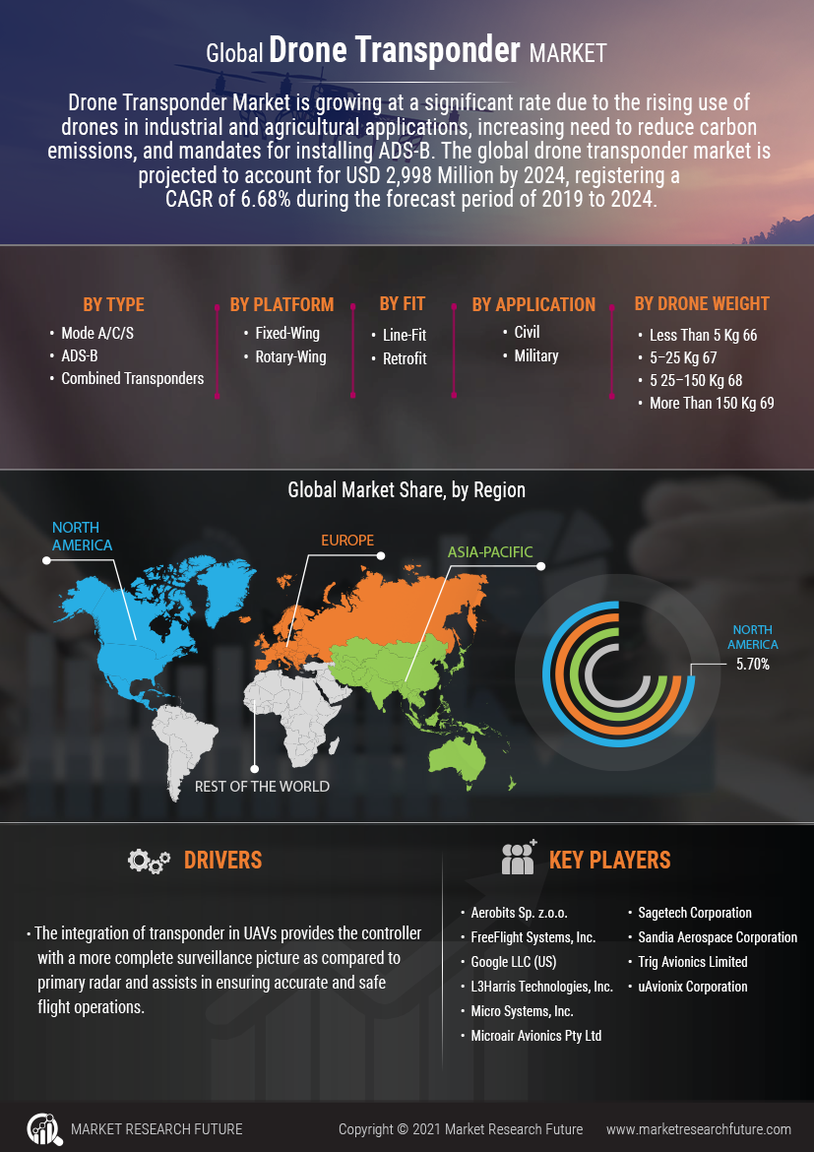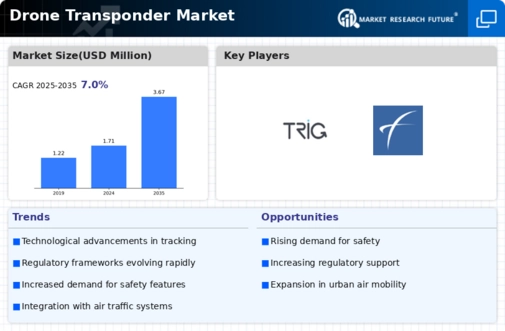Market Growth Projections
The Global Drone Transponder Market Industry is projected to experience substantial growth over the coming years. The market is expected to reach 1.71 USD Billion in 2024 and is forecasted to grow to 3.67 USD Billion by 2035. This growth trajectory indicates a compound annual growth rate of 7.22% from 2025 to 2035. Factors contributing to this growth include regulatory developments, technological advancements, and the increasing adoption of drones across various sectors. The market's expansion reflects the evolving landscape of drone technology and its integration into everyday operations.
Growing Focus on Air Traffic Management
The Global Drone Transponder Market Industry is also influenced by the growing focus on air traffic management systems that accommodate the increasing number of drones in the airspace. As drone operations expand, the need for effective management solutions becomes critical to ensure safety and efficiency. Governments and aviation authorities are exploring ways to integrate drones into existing air traffic control systems. This integration necessitates the use of advanced transponder technologies to facilitate communication and tracking. The emphasis on air traffic management is likely to drive demand for drone transponders, contributing to the overall growth of the market.
Increased Investment in Drone Technology
Investment in drone technology is a significant driver of the Global Drone Transponder Market Industry. Venture capital and government funding are increasingly directed towards developing innovative drone solutions, including advanced transponder systems. For example, various countries are investing in research and development initiatives to enhance drone capabilities and safety features. This influx of capital not only accelerates technological advancements but also fosters a competitive market environment. As investments continue to rise, the demand for sophisticated transponder technologies is expected to grow, further propelling the market's expansion in the coming years.
Regulatory Compliance and Safety Standards
The Global Drone Transponder Market Industry is significantly influenced by the increasing regulatory compliance and safety standards imposed by aviation authorities worldwide. Governments are actively establishing frameworks to ensure the safe integration of drones into national airspace systems. For instance, the Federal Aviation Administration in the United States has mandated the use of transponders for certain drone operations. This regulatory push is expected to drive the market, as compliance with these standards is crucial for operators. As the industry evolves, the demand for advanced transponder technologies that meet these regulations is likely to grow, contributing to the market's expansion.
Technological Advancements in Drone Systems
Technological advancements play a pivotal role in shaping the Global Drone Transponder Market Industry. Innovations in drone design, communication systems, and transponder technologies are enhancing operational capabilities and safety. For example, the integration of Automatic Dependent Surveillance-Broadcast (ADS-B) technology in drones allows for real-time tracking and situational awareness. This technological evolution is expected to propel the market, as operators seek to leverage these advancements for improved efficiency and safety. The anticipated growth in the market, projected to reach 1.71 USD Billion in 2024 and 3.67 USD Billion by 2035, underscores the importance of these innovations.
Rising Demand for Commercial Drone Applications
The Global Drone Transponder Market Industry is experiencing a surge in demand for commercial drone applications across various sectors, including agriculture, logistics, and infrastructure inspection. As businesses increasingly adopt drones for operational efficiency, the need for reliable transponder systems becomes paramount. For instance, in agriculture, drones equipped with transponders facilitate precision farming by enabling accurate monitoring of crop health. This growing adoption is expected to drive market growth, with a projected compound annual growth rate of 7.22% from 2025 to 2035. The expansion of commercial drone use cases is likely to further stimulate demand for advanced transponder technologies.

















Leave a Comment